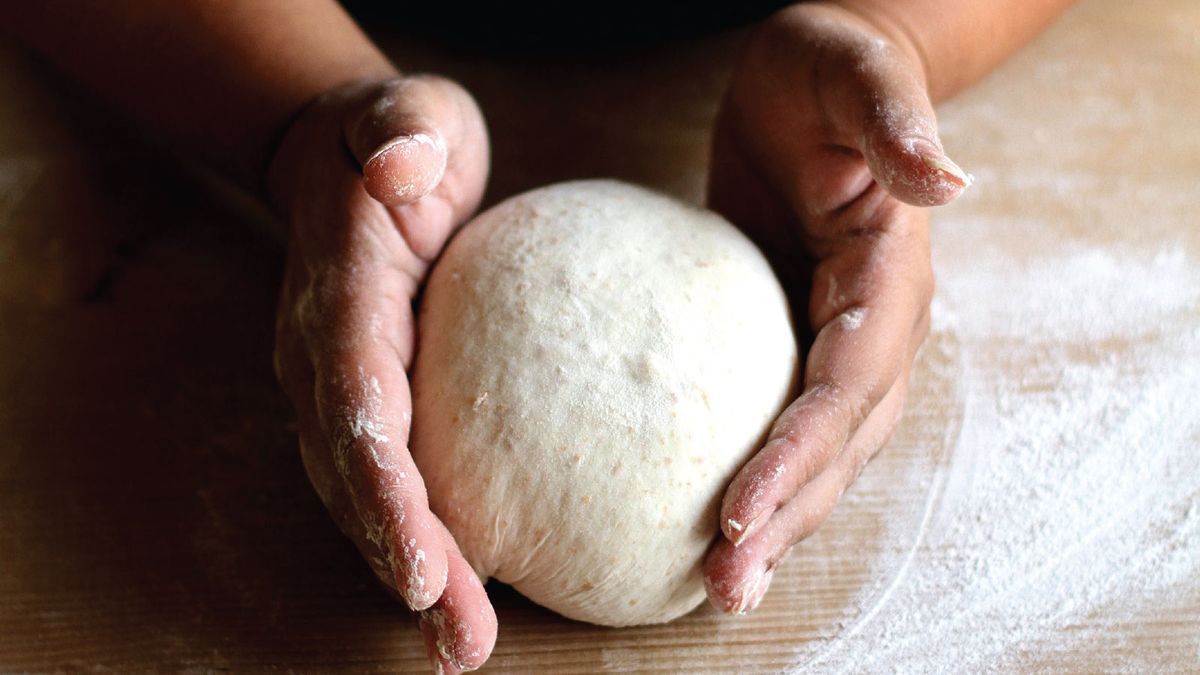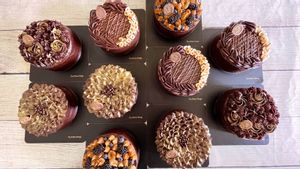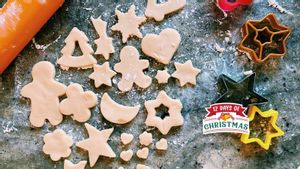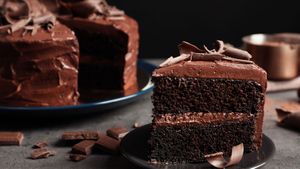An author, a consultant, a baker, and a mother—Saee Koranne-Khandekar wears many hats with elegance. A literature graduate who found her calling in the kitchen, Saee is best known for her work with Maharashtrian cuisine and baking—two diametrically opposite subjects that she juggles with as much ease as she juggles her many roles. We talk to her about her latest book, From My Oven, and what makes it special.
Here are the edited extracts…
1. Tell us about your new book, From My Oven.
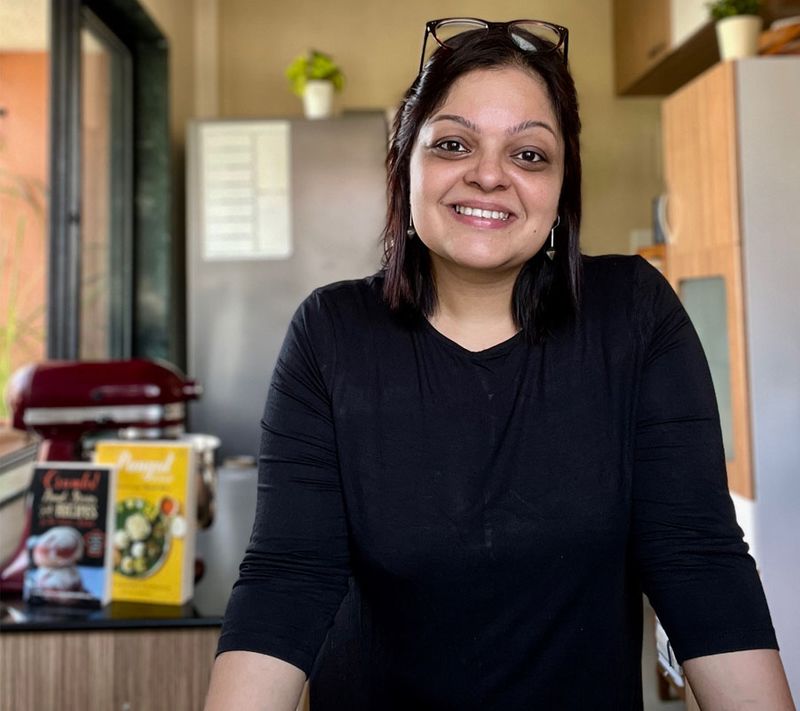
From My Oven started out as a digital book in the second wave of the pandemic. I had put it together for a fundraiser. We managed to raise about 12 lakh rupees and all of it went to a place called Shenalaya in Ahmadnagar. The digital book did surprisingly well and many readers wrote to me to turn it into a proper book. I also thought it was a good idea and From My Oven was born.
2. Your first book, Crumbs, is also about baking and it is pretty detailed. How is From My Oven different?
There are so many books on baking available today, but they don’t always work. The ones from abroad are not relevant because of different climatic conditions and ingredients. The Indian ones tend to be more about Instagram-friendly recipes that are pretty to look at but not technically sound. People don’t yet know what yeast to choose, what kind of oven to bake in, and what flour to use—so I thought this would be a good way to discuss those concerns. The first couple of chapters in the book are about the theory of baking like what kind of equipment to choose or how can you substitute ingredients — you know, the kind of things that no one talks about anymore. I felt it was about time to go back to the basics and understand the technical aspects and this book will help do that.
3. You mentioned that the book is for home bakers and beginners, what kind of information can they expect?
Social media makes everything look so fancy that it seems as if unless you have the exact same equipment you cannot bake. But we have been baking wonderfully for centuries in the absence of these fancy equipment and we still can. In the book, I have talked about home equipment you can use to bake, like a steel thaali can be used to make a pizza. There are also substitutes for ingredients including egg, so that you know if you do not have one ingredient you can use another. The book also explains the theory and the science of baking and addresses the issues one faces real-time: what if the cake sinks or domes or cracks? How can you prevent it in the future? I have also included things like how to make croutons from leftover roti or roast chicken for just one — I want to showcase that the oven can be used for so many different things other than just cooking elaborate festive meals.
4. What is your process of creating a recipe—do you do it from scratch or do you improvise?
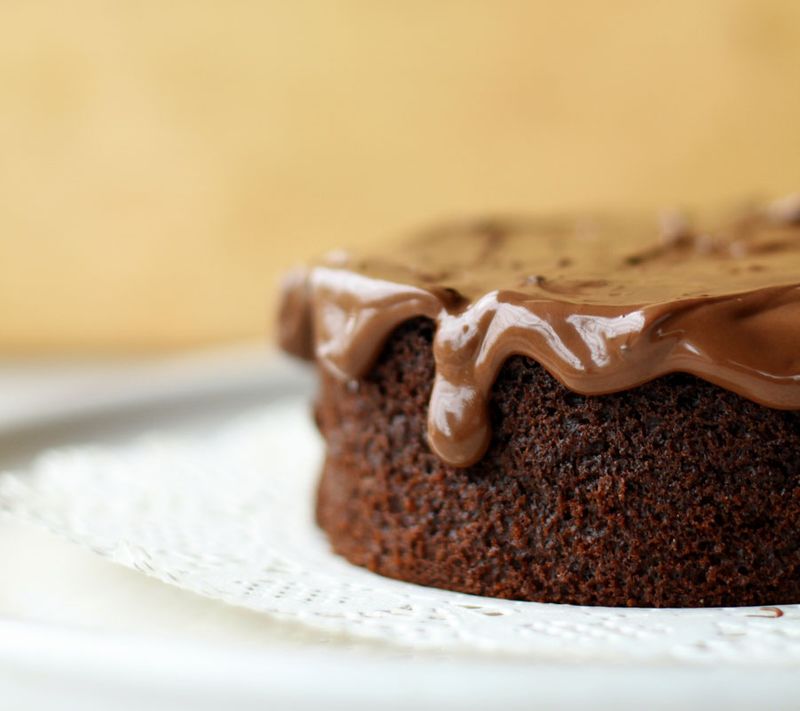
When I started this book, I made a master list of recipes that I thought would work for someone who is just starting to bake. I wanted recipes that are not intimidating and yet comforting, recipes that can be broken down into simple steps and yet look stellar on a tea table or a birthday table. About the process, I test each recipe at least twice. The first time is to make sure that it is working out and the second time is to test as a reader. Sometimes I ask friends to try some recipes to see if they work in another person’s kitchen too.
5. You are not a trained chef, how did you start your journey in the culinary world?
I studied bakery and confectionery in college. I had picked it up because we had always been baking at home and I thought it will be simple. It turned out to be a proper hospitality course and was very demanding; it equipped me with the technical knowledge that still comes in handy in the kitchen. After that, I did my MA, worked as an editor, and an instructional designer. By that time I had started blogging about food and teaching to bake. It was during this time that the idea for the first book came about and Crumbs happened, and then the second book Pangat materialised. In the background, I kept doing menus and pop-ups and developed products.
6. What inspires you to cook and develop so many new recipes?
For my books and for the recipes I share on social media, the inspiration is that there may be so many people out there struggling with cooking and planning every day means the way I often do. If I can share what I do and if it is of help, why not!
For my work, I look at creators I admire--chefs and home cooks in equal measure, culinary literature and sometimes, very simply, the season.
7. What are your future plans?
There is another book coming up, but it is in the early stages right now. Apart from that, I am looking forward to more interesting pop-ups and menus with new establishments, which is something I really enjoy.
Vegan Chocolate Cake
I first made this cake for a friend who is vegan, and who taught me what little I know about cooking with substitutions for a specific diet. Once I had her approval, I knew this cake was a keeper.
Ingredients for the cake:
- 1 and ½ cups all-purpose flour (maida)
- ½ cup ground almonds
- ½ cup cocoa
- 1 and ¼ teaspoon baking soda
- 1 and ¼ cup soft brown or demerara sugar
- A pinch of salt
- 1 and ½ cups unflavoured soy milk
- 1/3 cup chopped dark chocolate or chocolate callets
- ¼ cup unflavoured vegetable oil
- 1 teaspoon apple cider vinegar or synthetic white vinegar
- 1 teaspoon vanilla extract
- 1 teaspoon instant coffee powder
- 2 tablespoons maple syrup
Ingredients for the decoration:
- 1 cup chopped dark chocolate or chocolate callets
- ¼ cup unflavoured soy milk
- Flaked almonds, toasted
Method:
- Preheat the oven to 180 degrees centigrade. Grease and line an 8-inch round cake tin with parchment.
- Place all the dry ingredients in a large mixing bowl (flour, ground almonds, cocoa, coffee, sugar, baking soda, salt). Whisk together to combine. Set aside.
- Place the chocolate and the soy milk in a bowl and microwave for 30-50 seconds (stopping every 30 seconds to mix and to ensure that the chocolate does not split). You could also do this in a bowl placed over hot water.
- When smooth and combined, add the maple syrup, oil and vanilla and mix well.
- Add the wet ingredients to the dry and combine using a spatula, ensuring there are no lumps.
- Now, quickly add the vinegar and fold well, ensuring the effervescence gets uniformly distributed. This is what will make the cake light.
- Immediately pour the batter into the prepared tin and bake for 30-40 minutes until a skewer inserted in the centre comes out clean.
- Invert the cake on a cooling rack and allow it to cool completely.
- Make the ganache by simply microwaving the chocolate and the soy milk together for 20-40 seconds, stopping and mixing every few seconds). Mix to achieve a smooth and glossy ganache.
- Pour the ganache all over the cake and its sides. Use an offset spatula to create patterns in the ganache, if liked. Decorate with the toasted almonds.


